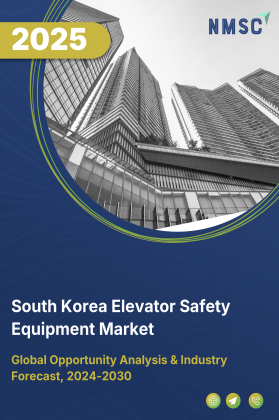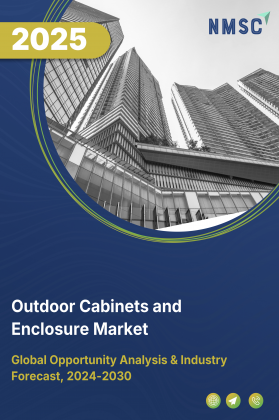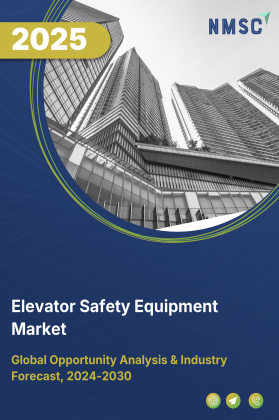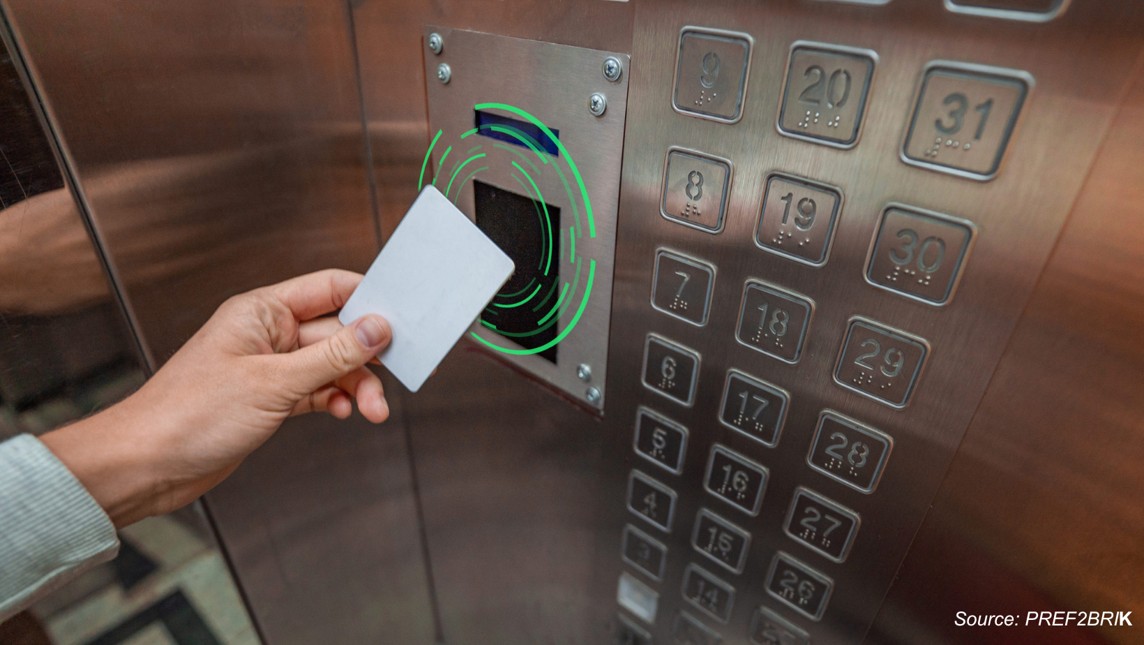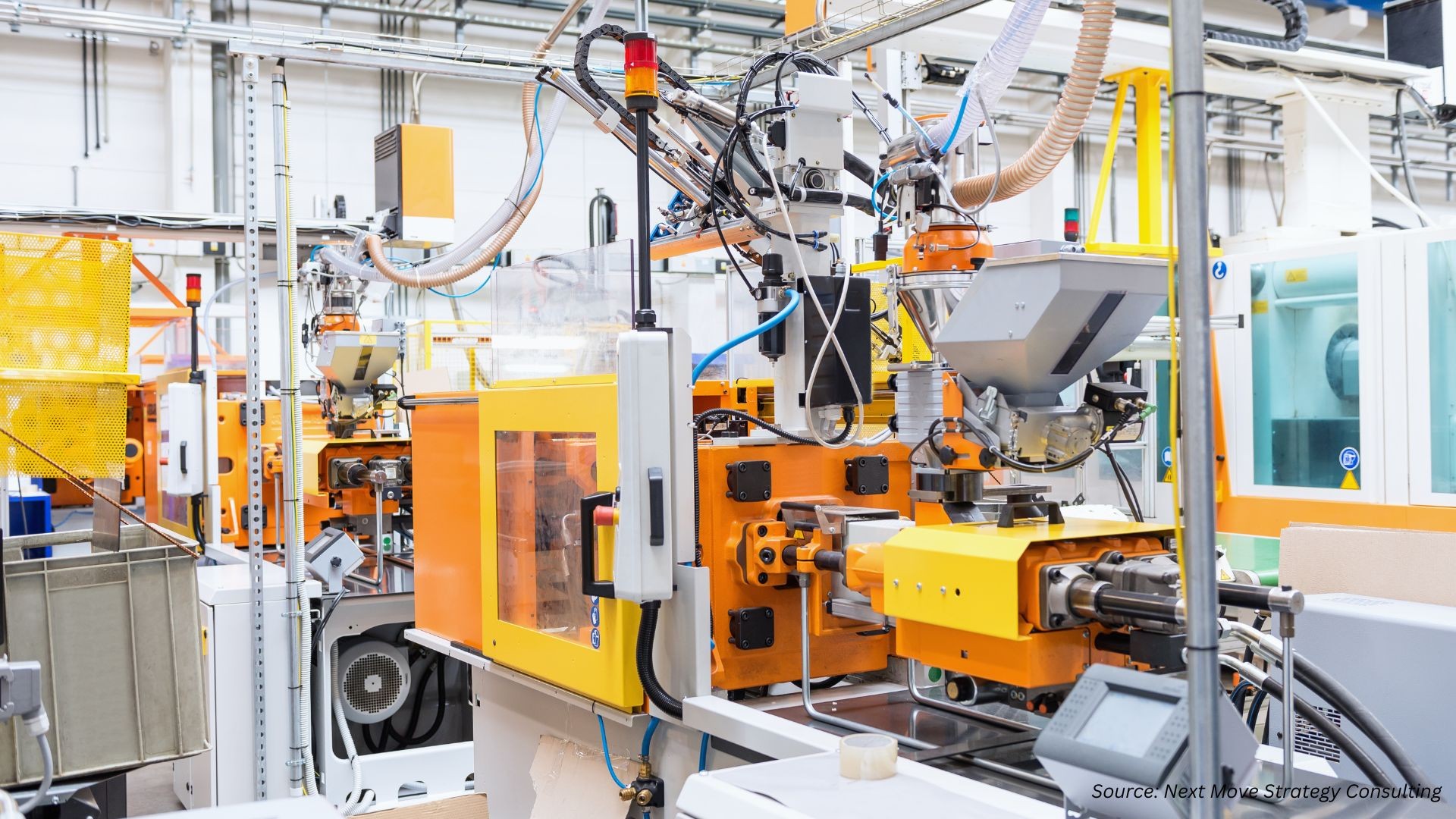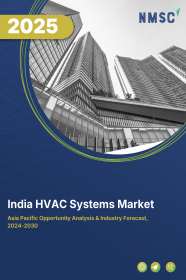
India HVAC Systems Market by Equipment (Room‐Level Air Conditioners, and Others), by System Type (Centralized Systems, and Others), by Implementation Type (New Construction Buildings, and Retrofit Buildings), by Technology (Inverter Technology, and Others), by Energy Efficiency (1 Star, and Others), by Capacity (Up to 1.5 Ton, and Others), by Installation/Mounting (Wall-mounted, and Others), by End User (Commercial, and Others) - Opportunity Analysis and Industry Forecast, 2024– 2030.
Industry: Construction & Manufacturing | Publish Date: 15-Oct-2025 | No of Pages: 221 | No. of Tables: 254 | No. of Figures: 187 | Format: PDF | Report Code : CM1944
Market Definition
The India HVAC System Market size was valued at USD 15.69 billion in 2023, and is predicted to reach USD 33.50 billion by 2030, at a CAGR of 10.8% from 2024 to 2030.
HVAC (Heating, Ventilation, and Air Conditioning) refers to the technology and systems used in buildings to regulate indoor environmental conditions such as temperature, humidity, and air quality to ensure comfort and safety for occupants. Heating systems provide warmth during colder months, ventilation systems circulate and replenish indoor air, and air conditioning systems cool and dehumidify indoor air during warmer months.
HVAC systems offer several advantages, including improved occupant comfort and health, increased energy efficiency leading to cost savings, better indoor air quality through filtration and ventilation, precise temperature control for enhanced productivity in commercial settings, and protection of building infrastructure from extreme weather conditions. Additionally, these systems can be designed to meet specific requirements, contributing to sustainability goals by reducing carbon emissions and promoting eco-friendly practices in building operations.
Stringent Energy-efficiency Codes and Building Standards Drive the India HVAC Systems Market
The India HVAC systems market is experiencing substantial growth due to the increasing enforcement of energy-efficiency norms and building performance standards across urban infrastructure projects. The Bureau of Energy Efficiency (BEE), under the Ministry of Power, has been actively advancing the implementation of the Energy Conservation Building Code (ECBC), which mandates minimum energy efficiency levels for commercial buildings. Additionally, state-level compliance and awareness campaigns have accelerated the adoption of HVAC systems that meet or exceed these guidelines. As cities expand under smart city missions and urban renewal initiatives, the focus on sustainable infrastructure is compelling builders and developers to incorporate high-performance HVAC solutions. This shift not only encourages manufacturers to design systems tailored to evolving efficiency requirements but also prompts end-users to upgrade legacy systems to remain compliant and cost-effective in the long run. The demand is further amplified by government-backed green rating systems such as GRIHA and IGBC, which prioritize energy-efficient HVAC technologies in certified buildings.
Rising Health Concerns and Urban Air Pollution Levels, Fuel Demand for Advanced HVAC Solutions
Growing awareness regarding respiratory health and the deteriorating air quality in urban regions is significantly influencing consumer preferences in India’s HVAC market. With metropolitan areas routinely breaching permissible air pollution limits, there is a sharp uptick in demand for indoor climate control systems that offer high-grade air filtration and purification capabilities. HVAC technologies integrated with PM2.5 filters, activated carbon, and antimicrobial components are witnessing increased adoption in both residential and institutional settings. Furthermore, regulatory initiatives such as the National Clean Air Programmed (NCAP) have brought air quality to the forefront of building design and retrofitting practices, especially in Tier 1 and Tier 2 cities. Educational institutions, healthcare facilities, and government buildings are being equipped with HVAC systems engineered to reduce airborne contaminants and maintain thermal comfort in varying climates. This paradigm shift toward health-centric climate control is pushing manufacturers to innovate systems that address both environmental and well-being concerns, contributing to the sustained expansion of the market.
Fluctuating Raw Material Availability and Input Costs Restrain Manufacturing Growth in the HVAC Sector
The Indian HVAC manufacturing landscape faces persistent challenges due to the unstable availability and pricing of critical raw materials such as copper, aluminum, and specialized polymers. These materials are heavily imported or subject to supply disruptions stemming from geopolitical uncertainties and global logistics constraints. Additionally, domestic suppliers often struggle to meet quality consistency and scale, especially during peak construction seasons. Volatility in input costs has made it difficult for local manufacturers, particularly SMEs, to maintain competitive pricing while ensuring product quality. This not only impacts the affordability of HVAC systems for price-sensitive consumer segments but also slows the pace of R&D investment in indigenous product development. Coupled with rising compliance costs tied to updated energy-efficiency norms, the unpredictable raw material scenario poses a significant restraint on production scalability and market penetration in India.
Rapid Adoption of Smart Infrastructure and Iot-based Climate Solutions Creates New Growth Avenues
India's growing emphasis on smart infrastructure and connected living environments is generating a robust opportunity for IoT-enabled HVAC systems. Initiatives under the Smart Cities Mission and Atal Mission for Rejuvenation and Urban Transformation (AMRUT) are promoting the development of intelligent buildings equipped with sensor-driven technologies for real-time monitoring and control. HVAC systems integrated with IoT capabilities are being prioritized in new urban development projects, offering features such as remote diagnostics, energy consumption analytics, and adaptive temperature regulation. This shift is also visible in premium residential complexes and commercial office spaces where digital control and energy management are becoming standard expectations. The proliferation of home automation platforms, coupled with increasing smartphone and internet penetration, is further catalyzing the demand for smart HVAC solutions tailored to India’s diverse climatic zones. As government bodies and private developers push for future-ready infrastructure, the integration of HVAC systems into broader IoT ecosystems presents a lucrative opportunity for manufacturers and service providers across the country.
Competitive Landscape
The market players operating in the India HVAC System market include Voltas Limited, Blue Star Ltd, Carrier, LG Electronics India Pvt. Ltd, Daikin Industries, Ltd., Advanced Cooling Technologies, Inc., Mitsubishi Electric Corporation, Hitachi, Ltd., Samsung Electronics, MG Cooling Solutions, Reynold India Private Ltd., Suntec Energy Systems, Evapoler Eco Cooling Solutions, Havells India Limited, Lloyd Electronics, Trane India (Ingersoll Rand/Trane Technologies), Johnson Controls India, and Emerson Climate Technologies India, and others.
India HVAC System Market Key Segments
By Equipment
-
Room‐Level Air Conditioners
-
Window
-
Portable
-
Cassette (ceiling-mounted)
-
Floor-standing console
-
-
Split Air Conditioners
-
Single-split (1 indoor + 1 outdoor)
-
Multi-split (≥2 indoors + 1 outdoor)
-
VRF/VRV
-
-
Packaged & Central AC Units
-
Rooftop packaged units
-
Self-contained packaged units
-
Central chiller and AHU systems
-
-
Chillers
-
Air-cooled
-
Water-cooled
-
Absorption
-
-
Heating Equipment
-
Heat Pumps
-
Furnaces
-
Boilers
-
Unit Heaters
-
-
Ventilation Equipment
-
Air Handling Units (AHUs)
-
Fans & Blowers
-
Air Filtration Systems
-
Air Purification Systems
-
-
Humidity Control
-
Humidifiers
-
Dehumidifiers
-
-
Cooling Towers
-
Controls & Thermostats
By System Type
-
Centralized Systems
-
Decentralized Systems
-
Hybrid Systems
By Implementation Type
-
New Construction Buildings
-
Retrofit Buildings
By Technology
-
Inverter Technology
-
Non-Inverter Technology
-
Smart/IoT-enabled
-
Conventional
By Energy Efficiency
-
1 Star
-
2 Star
-
3 Star
-
4 Star
-
5 Star
By Capacity
-
Up to 1.5 Ton
-
1.5-3 Ton
-
3-5 Ton
-
Above 5 Ton
By Installation/Mounting
-
Wall-mounted
-
Ceiling-mounted
-
Floor-standing
-
Ducted
-
Window-mounted
-
Portable
By End User
-
Commercial
-
Offices
-
Hospitality (Hotels, Restaurants)
-
Healthcare
-
Education
-
Retail
-
Airports
-
-
Residential
-
Industrial
Key Players
-
Voltas Limited
-
Blue Star Ltd
-
Carrier
-
LG Electronics India Pvt. Ltd
-
Daikin Industries, Ltd.
-
Advanced Cooling Technologies, Inc.
-
Mitsubishi Electric Corporation
-
Hitachi, Ltd.
-
Samsung Electronics
-
MG Cooling Solutions
-
Reynold India Private Ltd.
-
Suntec Energy Systems
-
Evapoler Eco Cooling Solutions.
-
Havells India Limited
-
Lloyd Electronics
-
Trane India (Ingersoll Rand/Trane Technologies)
-
Johnson Controls India
-
Emerson Climate Technologies India
Report Scope and Segmentation
|
Parameters |
Details |
|
Market Size in 2023 |
USD 15.69 Billion |
|
Revenue Forecast in 2030 |
USD 33.50 Billion |
|
Growth Rate |
CAGR of 10.8% from 2024 to 2030 |
|
Analysis Period |
2023–2030 |
|
Base Year Considered |
2023 |
|
Forecast Period |
2024–2030 |
|
Market Size Estimation |
Billion (USD) |
|
Growth Factors |
|
|
Companies Profiled |
15 |
|
Market Share |
Available for 10 companies |
|
Customization Scope |
Free customization (equivalent up to 80 working hours of analysts) after purchase. Addition or alteration to country, regional, and segment scope. |
|
Pricing and Purchase Options |
Avail customized purchase options to meet your exact research needs. |



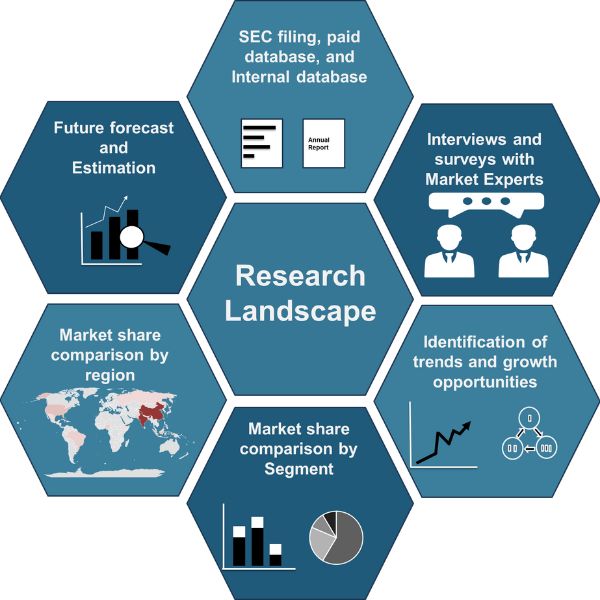
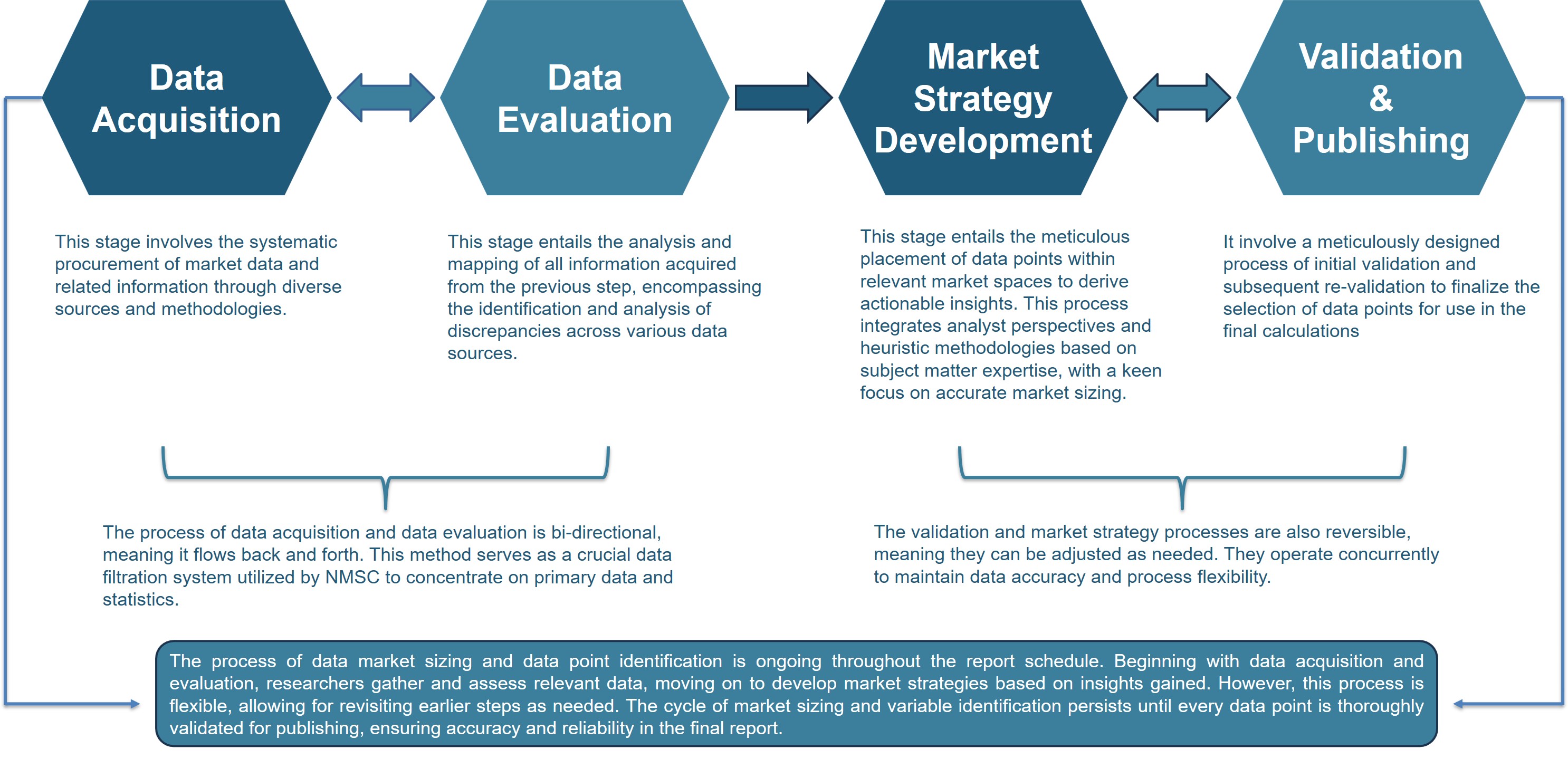




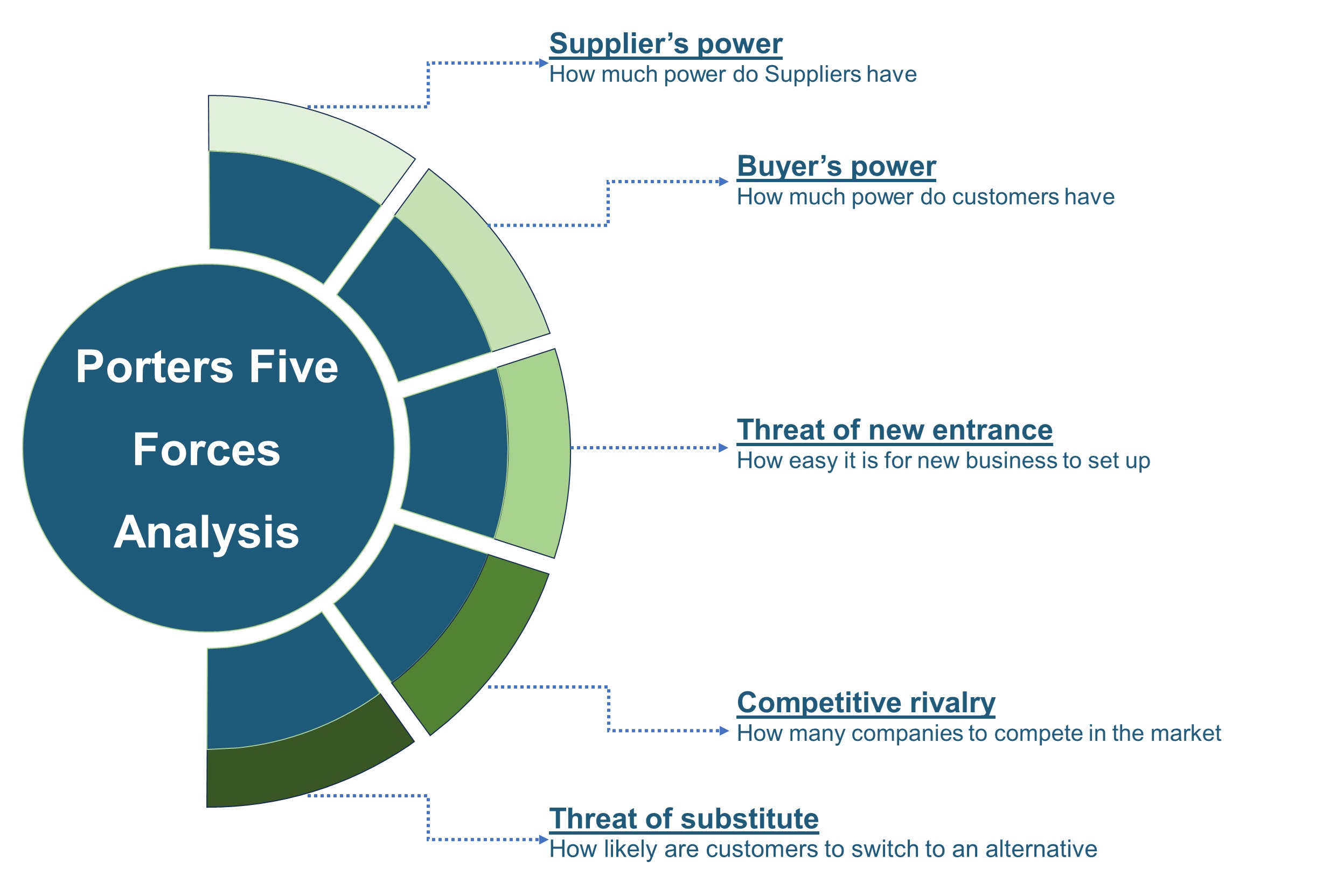







 Speak to Our Analyst
Speak to Our Analyst



